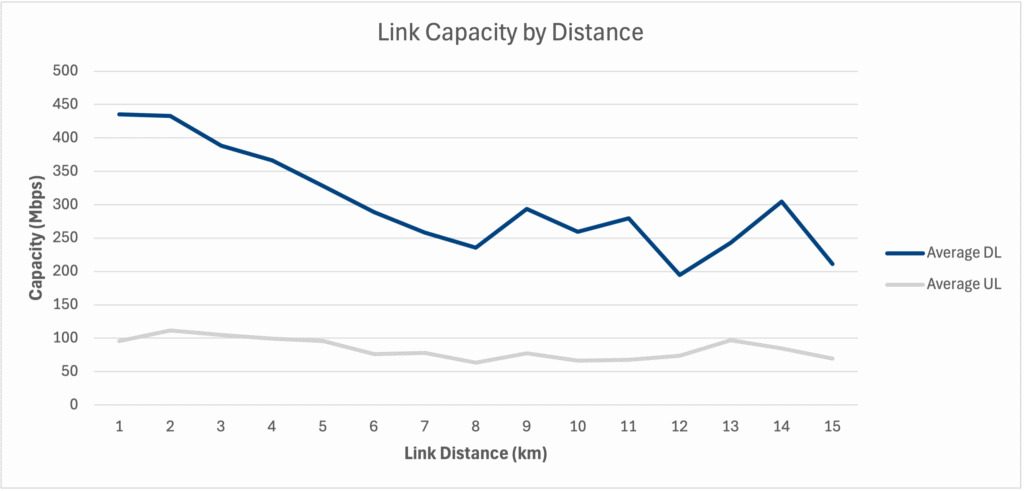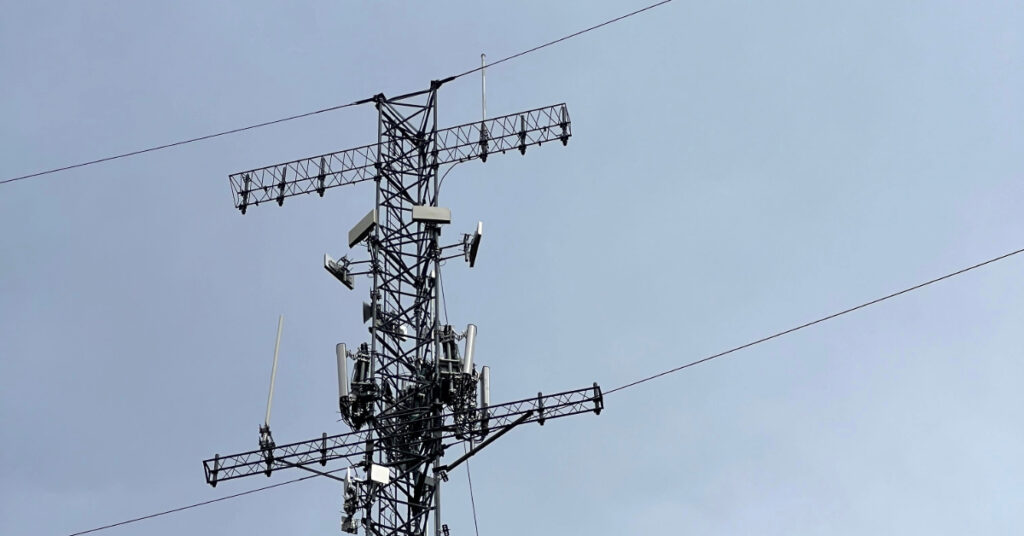At Tarana, we love hearing about the game-changing experiences our customers are having with G1. But we had to ask: just how challenged are the worst-performing links in our networks? To find out, we turned to the Tarana Cloud Suite (TCS) to analyze the most challenging 500 links in operation today.
The results? Even in the toughest RF conditions imaginable, Tarana’s G1 still delivers connectivity that outperforms legacy fixed wireless solutions by a wide margin.
The Reality of Spectrum Congestion
For this study, we considered a challenging link to be one with a very high interference-to-noise ratio (INR). These are the links that, by all traditional measures, should be unusable. We took the 500 links with the highest INR as reported by TCS and dug in.
Here’s what we found:
- The vast majority (90%) of these links operated in 5 GHz, which isn’t surprising given the spectrum’s well-known congestion challenges.
- 9% of links were CBRS, reinforcing that even the protected nature of CBRS doesn’t eliminate interference challenges.
- One link was in 6 GHz, but was impacted by a single 5 GHz carrier on the remote node, subjecting it to heavy interference.
These findings confirm what many operators already know: even CBRS networks need interference management strategies, and real-world fixed wireless deployments require robust interference cancellation technology.
How Challenged Were These Link, Really?
Let’s break down the numbers:
As you can see, the average INR is quite high at 52.1 dB. This is the type of inference that would normally destroy link performance. Yet, in the case of our sample, G1 delivered an average of 367 Mbps down and 96 Mbps up at distances exceeding 4 km. This is the kind of performance that is only possible thanks to G1’s unique noise cancellation feature—a capability legacy fixed wireless simply does not have.
Another way of looking at performance is by link distance. The following chart shows the average downlink and uplink performance based on link distance.

As this graph shows, G1 continues to deliver multi-hundred megabit performance, even at long distances.
How Does This Compare to All Links?
To put this into perspective, here’s how these challenging links compare to the overall performance of all links in TCS:
The numbers speak for themselves: even the most challenged 500 links are still, at most, only about 20% worse on average than the sum total of all links. However, in many of the metrics above, the difference is trivial.
This is solid, data-driven proof that Tarana’s unique innovations—including noise cancellation, distributed massive MIMO, fine-grain beamforming, and ABIC—don’t just work, they redefine what’s possible in fixed wireless.
Real-World Proof
Numbers are great, but nothing beats real-world results. Our customers see this firsthand every day:
“We had a customer to whom we had recently denied service because of all of the RF noise in their neighborhood. With Tarana, not only were we able to connect them, but we were able to deliver 200 Mbps of service in an environment where we had previously said, ‘We just can’t connect you.’ That’s simply amazing.” — Sebastian Ivanisky, CTO VTX1.
It’s not just our customers saying this. A recent blog by network optimization and QOE solutions vendor Preseem confirms the same outstanding performance as independently observed by their own system.
Why This Matters
Traditional fixed wireless solutions struggle in high-interference environments, leaving revenue on the table and limiting service expansion. Tarana’s cutting-edge interference cancellation and advanced RF technology deliver fiber-class broadband performance even in the most challenging conditions. With G1’s industry-leading capabilities, operators can unlock new revenue streams by reaching previously untouchable subscribers while boosting customer retention with an unbeatable broadband experience.
If you’d like to learn more, check out our other blogs or some of our favorite customer links. Or reach out to us at info@taranawireless.com. We’d love to hear from you.
